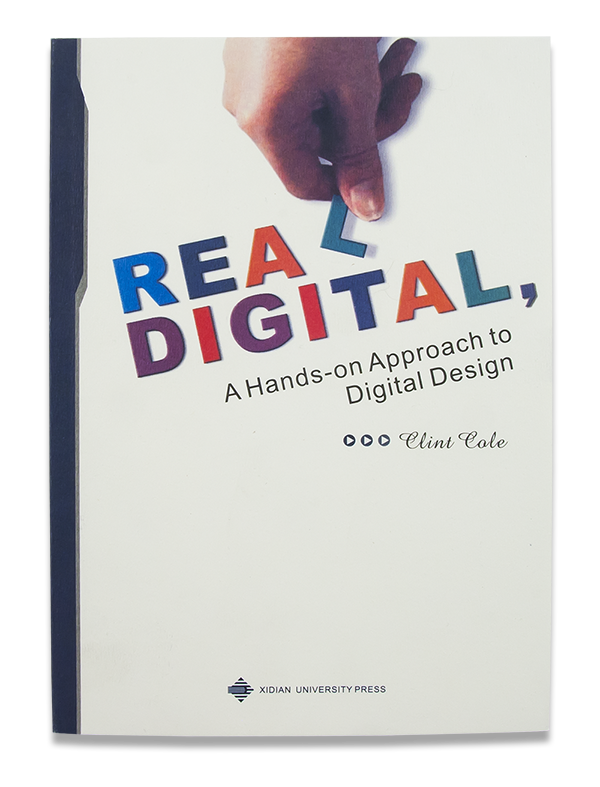Real Digital, A Hands-on Approach to Digital Design Resource Center
Note
The Real Digital, A Hands-on Approach to Digital Design is retired and no longer for sale in our store.
Welcome to the resource center for Real Digital, A Hands-on Approach to Digital Design!
Here you will find all the reference materials that Digilent has created for this textbook, as well as links to any external content we have tracked down.
Real Digital is a collection of educational materials developed for use in introductory digital design classes. It is presented as an ordered series of modules that contain written chapters, Exercises and hands-on design projects. Each module corresponds to about three lectures, or one week, in a typical University setting. All examples are in VHDL.
The Real Digital system is built around state of the art hardware and software design tools from Xilinx and Digilent. Xilinx's free WebPack CAD software and Digilent's low cost FPGA learning platforms are seamlessly integrated with the text and design projects to create an experience-based learning environment. Webpack is available from the Xilinx website, and the Basys2 and Nexys2 boards can be found at the links below. The lower-cost Basys2 is a good choice for students who may not take additional digital systems or computer engineering classes. The more complex and capable Nexys2 board is suitable for this class and later classes as well.
The Real Digital system, including the CAD software and FPGA learning platform, is designed for direct student ownership. At a cost far below most textbooks, the system allows students to work in or out of the lab at a time and place of their choosing. Recent studies have shown that students with unrestricted access to design tools learn better, learn faster, and have a more enjoyable experience. Further, when more students work outside the lab, teaching resources can be selectively applied where they are needed most.
The Real Digital materials freely posted here are only a start - we hope you will find the materials useful, and help us improve them as well. We will provide all source files on request, and ask only that if you incorporate our materials in your own creations, you credit Digilent so that others can learn about our system. If you make improvements or additions, we would like to repost your work, and credit you as well.
Documentation
Module 1: Introduction to Electronic Circuits
This module presents basic information, definitions and concepts for students who have not had prior exposure to circuits. It also introduces Field Effect Transistors (FETs) and their use in digital circuits.
Module 2: Introduction to Digilent's Digital Design Circuit Boards
An introduction to Digilent's logic design circuit boards and the programmable device used on the board (the FPGA). An introduction to Digilent's Adept software, used to program the board, is also provided.
Module 3: Circuit Structure with an Introduction to CAD Tools
Structural and behavioral representations of digital circuits and their relationships are presented, along with an introduction to the Computer Aided Design (CAD) tools that will be used for the design projects.
Module 4: Logic Minimization
Basic definitions and theory related to electronic circuits for those unfamiliar with these topics.
Module 5: Introduction to VHDL
The requirements and methods for finding minimal logic system representations and structures are presented, including Boolean algebra, graphical methods, and computer-based methods.
Module 6: Combinational Circuit Blocks
The behavior and structure of common combinational circuit blocks are presented, together with schematics and VHDL models. Blocks presented include multiplexers, decoders, encoders, and shifters.
Module 7: Combinational Arithmetic Circuits
The behavior and structure of common combinational arithmetic circuit blocks are presented, together with schematics and VHDL models. Blocks presented include full adders, subtractors, ripple-carry and carry-look-ahead adders, comparators, multipliers, and ALUs. The two's complement repetition of negative numbers is also presented.
Module 8: Signal Propagation Delays
A basic presentation of the origin and problems associated with signal delays in digital systems.
Module 9: Basic Memory Circuits
The structure, function, and behavior of electronic memory circuits are presented, together with structural and behavioral models of flip-flops and latches.
Module 10: The Structural Design of Sequential Circuits
This module presents the foundational concepts and methods for designing and implementing sequential circuits (also known as state machines). Common circuit models, state diagrams, and their relationships are presented, together with structural circuit design methods. Counters and clock dividers are also presented.

